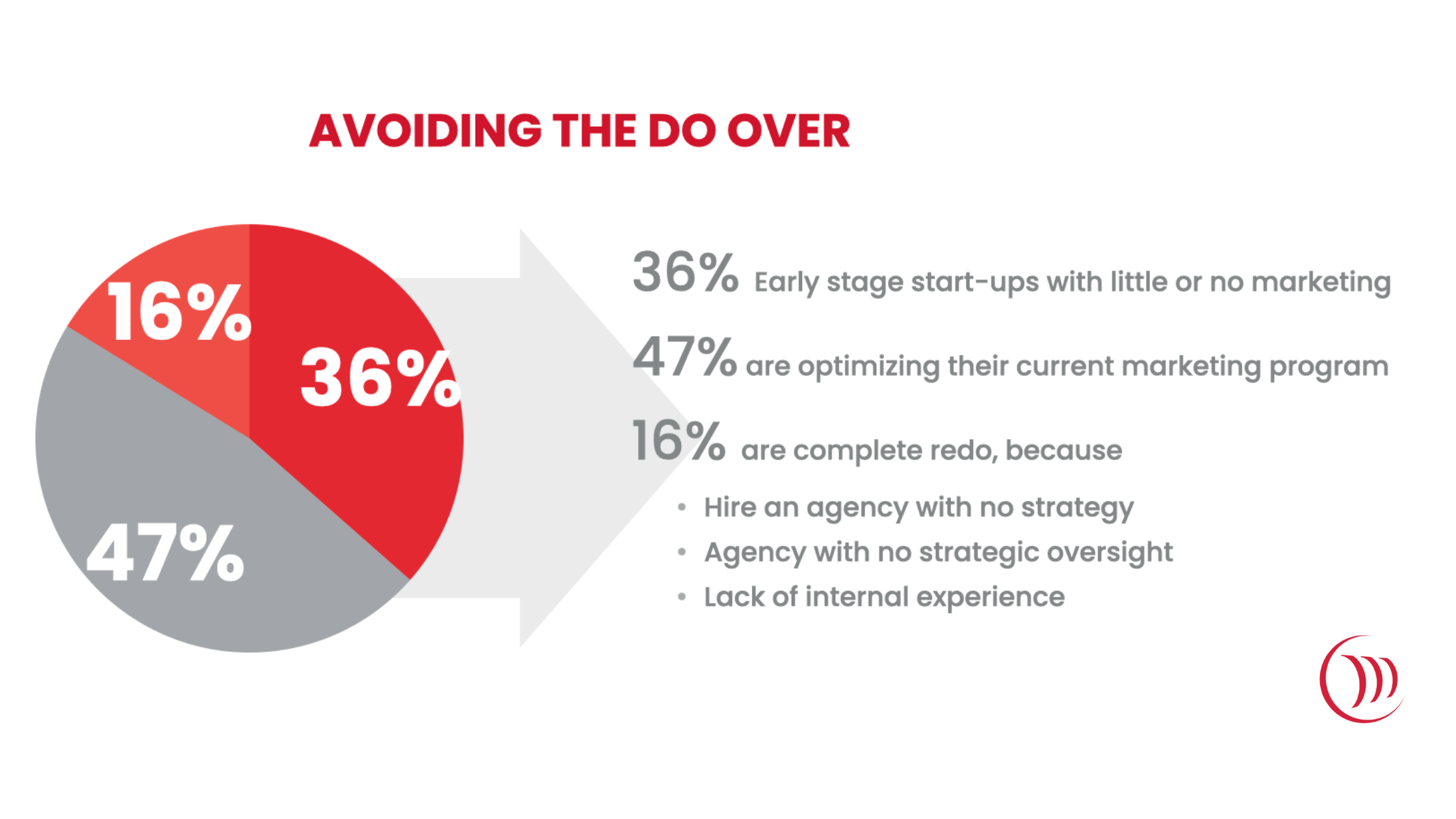The Costs of Redoing Your Marketing and Sales Strategy: Doing it Right the First Time vs. Second Time Around
At Mahdlo Executive Advisors, a leading consultancy firm specializing in sales and marketing strategies, we have witnessed a recurring trend among our clients. Approximately 16% of the organizations we work with approach us to fix or redo their sales and marketing programs that have gone awry. In this blog post, we will explore the costs associated with redoing these strategies and shed light on the valuable insights we have gained from helping clients overcome their initial failures. We will delve into the financial implications, the importance of strategic oversight, and the role of internal expertise. Let's dive into the world of sales and marketing strategy redos!
Section 1: Financial Implications of Redoing Your Strategy
1.1. Time Costs:
Redoing your marketing and sales strategy can be a time-consuming process. Not only does it require revisiting and reassessing your previous efforts, but it also entails additional planning, research, and implementation. The time spent on redoing your strategy means valuable resources that could have been allocated to other revenue-generating activities are diverted. According to a study by McKinsey & Company, companies spend an average of 10-15% of their marketing budgets on redoing failed strategies, resulting in substantial opportunity costs.
1.2. Opportunity Costs:
When your marketing and sales strategy fails to deliver the desired results, it not only impacts your bottom line but also represents a missed opportunity. While you are busy redoing your strategy, your competitors are gaining a competitive advantage, capturing market share, and potentially acquiring your target audience. The opportunity costs associated with a failed strategy can be significant and have a long-lasting impact on your business's growth potential.
1.3. Lost Expenses of the First Build Plus Second Time Around:
Redoing your marketing and sales strategy means not only revisiting your previous investments but also incurring additional expenses. The costs associated with the first build, including research, campaign development, and implementation, are essentially lost. Moreover, the second attempt to get it right requires additional resources, such as hiring consultants, agency fees, technology investments, and employee training. These costs can quickly add up and strain your marketing budget. According to a report by Gartner, organizations spend an average of 12-20% of their marketing budgets on redoing failed strategies.

Section 2: Importance of Strategic Oversight
2.1. Hiring an Agency with No Strategy:
One of the primary reasons for a failed marketing and sales strategy is hiring an agency without a clear and well-defined strategy in place. While agencies may excel in specific tactics, without a comprehensive strategic framework, their efforts may lack direction and coherence. This lack of strategic oversight can lead to disjointed campaigns, misaligned messaging, and ultimately, ineffective results. Organizations should thoroughly evaluate agencies and ensure they have a robust strategic approach before engaging their services.
2.2. Agency with No Strategic Oversight:
Even if an organization hires an agency with a strategy, failure can still occur if there is no internal oversight. Organizations must actively participate in the strategy development process, providing insights, aligning objectives, and setting clear expectations. Without internal involvement and oversight, agencies may not fully understand the organization's unique value proposition, target audience, or overall business goals. Collaboration between internal teams and agencies is essential for a successful marketing and sales strategy implementation.
Section 3: The Role of Internal Expertise
3.1. Lack of Internal Experience:
Another common reason for a failed marketing and sales strategy is the lack of internal expertise. Organizations may not have individuals with the necessary knowledge and skills to effectively design, execute, and measure the success of their strategies. This can result in misallocation of resources, ineffective messaging and targeting, and a failure to adapt to market changes. Internal expertise is crucial for understanding the nuances of the industry, identifying opportunities, and making informed decisions. Investing in training and development programs for your internal team can mitigate the risks associated with a lack of expertise and ensure a more successful strategy implementation.
3.2. Leveraging Internal Insights:
Internal teams possess valuable insights into the organization's strengths, weaknesses, customer preferences, and market dynamics. However, failing to tap into this internal knowledge can hinder the effectiveness of your marketing and sales strategy. By involving internal stakeholders in the strategy development process, organizations can leverage their expertise and perspectives, ensuring a more comprehensive and informed approach. Internal teams can provide unique insights that external agencies or consultants may not have access to, enabling a more tailored and impactful strategy.
Section 4: A Case StudY and Real-World Examples
4.1. Case Study 1: Identity hidden to protect the innocent
Company X's Costly Redo Company X, a mid-sized technology firm, initially hired an agency to handle their marketing and sales strategy without conducting due diligence. The agency lacked a cohesive strategic framework and focused solely on tactics without aligning them with Company X's business goals. As a result, the marketing campaigns generated limited leads and failed to convert into sales. Recognizing the need for a redo, Company X engaged our consultancy firm to assess and revamp their strategy.
The financial implications for Company X were significant. They had already invested $100,000 in the first build, including campaign development and agency fees. Additionally, the time spent on the failed strategy amounted to six months, during which their competitors gained a competitive edge. The redo process required an additional investment of $50,000 in consulting fees, internal training, and technology upgrades. The total cost of the redo for Company X reached $150,000, not accounting for the missed revenue opportunities.
Conclusion:
Redoing your marketing and sales strategy comes with significant costs, both financially and in terms of missed opportunities. By considering the financial implications, recognizing the importance of strategic oversight, and leveraging internal expertise, organizations can increase their chances of getting it right the first time. Hiring agencies with clear strategies, ensuring internal oversight, and investing in internal expertise are key steps towards building successful marketing and sales strategies. At Mahdlo Executive Advisors, we understand the challenges organizations face in this area and have witnessed the transformative impact of a well-executed strategy. By learning from the failures of others, you can save valuable resources and position your business for long-term success in the dynamic world of sales and marketing.



